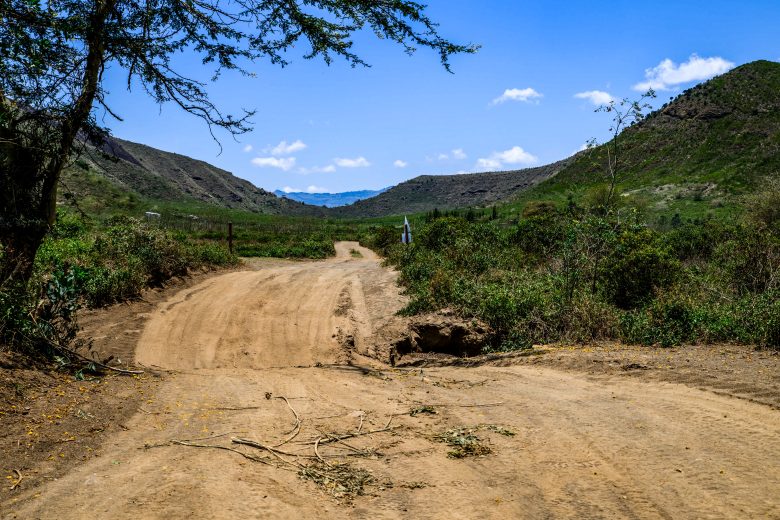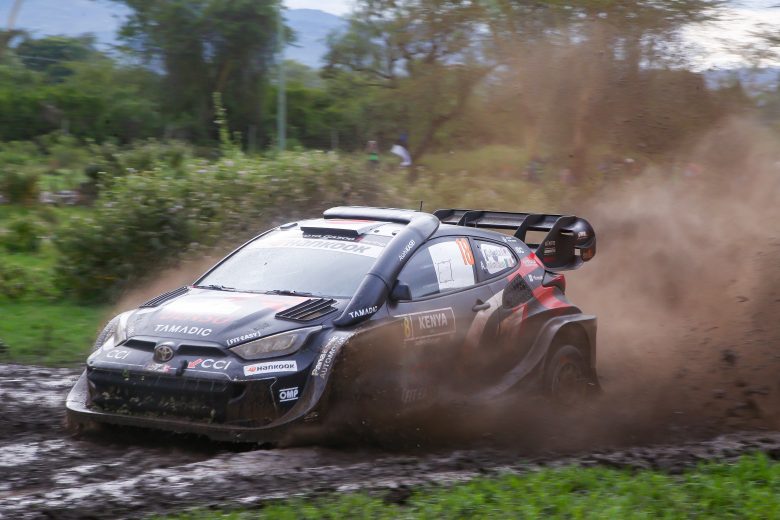Less than 10 miles into the competitive action of this year’s Safari Rally Kenya, and a Rally1 driver has already had to turn to the super-rally regulations.
Adrien Fourmaux won’t be tackling the brand-new Mzabibu stage after his Hyundai broke down on the road section leading to stage two due to electrical issues.
This is a concerning development, especially considering it wasn’t the “easy” stages on Thursday that raised concerns earlier in the week.
The real test begins on Friday with the longest stage of the rally. However, it’s the challenging conditions that have drivers feeling anxious.
“I think the first stage will already be quite revealing – super tricky, very demanding, and long at the same time,” said overnight leader Ott Tänak.
“So yeah, the entire day should be quite a spectacle.”
The Safari Rally is famous for its tough, car-damaging nature, and its difficulty is amplified when rain is involved. In the days leading up to the event, significant rainfall in the region has turned the terrain into muddy challenges, testing the patience of drivers.
With roads described as being “less prepared” compared to recent years, it’s easy to understand why many consider this the most challenging Safari Rally since 2021.
“This is the craziest rally of the year, and honestly, it’s much worse than ever before this time,” said Oliver Solberg to DirtFish.
“The roads look incredibly rough, and it seems like they haven’t really prepared them. So, you’re basically driving through whatever you can see – it’s a very tough challenge.”
“The cars will definitely take a beating, so it won’t be flat-out driving as it usually is,” added the WRC2 driver.
“Normally, you can push quite hard, but this year, it’s a whole different story.”

A highly experienced co-driver, with nearly 300 stage rally starts across both rally and rally-raid, believes the 2025 Safari Rally is “probably the toughest rally I’ve ever witnessed,” going so far as to say cross-country rallies “are nothing compared to this.”
World Champion Thierry Neuville added: “The stages are much greener, with a lot more grass. Everything’s hidden—there are many concealed stones—and the stages themselves are very tough. It will be quite challenging for the cars.”
This means drivers may have more flexibility in their lines, with Tänak predicting that cars will spend “a lot more time in the fields.”
Gus Greensmith, last year’s WRC2 winner, said the Elmenteita stage on Sunday will feel “just like the old days,” where “you pick your own path.” He also predicted, “I think this will be the toughest Kenya rally by far.”
So, what’s the key to success in a rally like this?
“Luck, for sure,” smiled Takamoto Katsuta, who has landed on the Safari podium three times from four starts. “The car has to be strong, reliable, and you need confidence to take risks in some places, but also be patient in others. The car has been very solid here in the past, but this year it needs to be even tougher because the stages are trickier.”

Being the fastest isn’t always the best strategy for victory, as Safari rookie Josh McErlean explained: “If you have a clean rally, even if you’re a second or two off the pace per kilometer, you could still finish in the top five. This is a rally where that approach can still get you a good result. It’s all about taking it day by day, stage by stage, and corner by corner.”
Finally, Tänak, who anticipates the “big show” tomorrow, offered this insight: “It comes down to how you feel in the end. You can sense how much the car is being punished and how hard the impacts are. You need to judge in your mind how much more you can handle. This year, the roads are less prepared, the grass is higher, and there’s still plenty of rough terrain underneath. It’s a tricky part. You can’t see the roughness; you can only feel it, so it’s a bit like driving blind. Fingers crossed the car holds up.”
With Friday’s action starting early for European viewers, it’s sure to be a rally worth watching.

